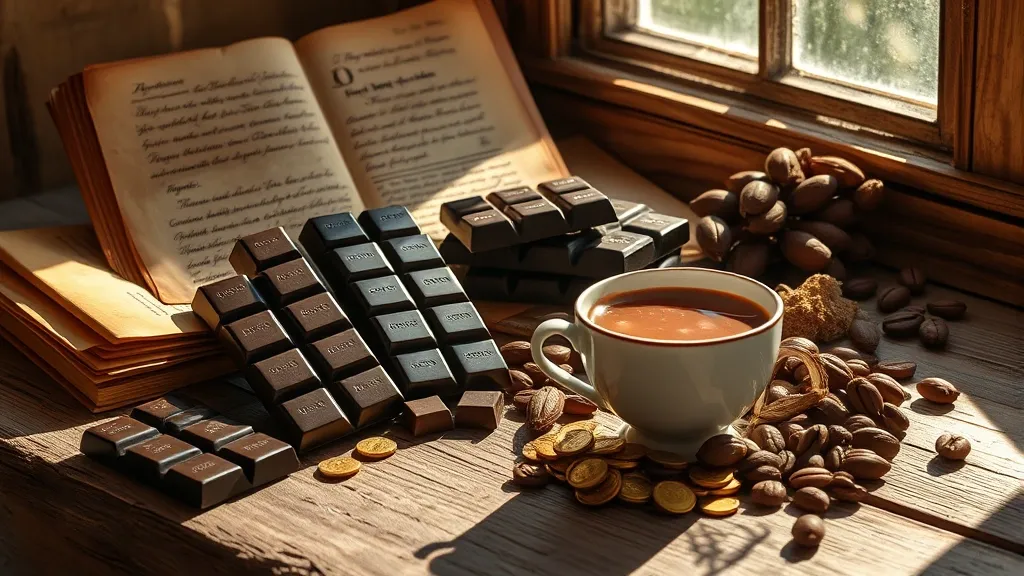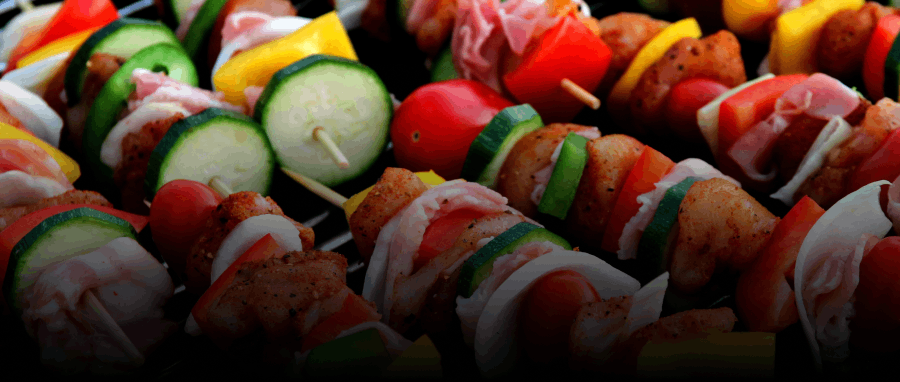From Bitter Beans to Golden Treats: The Origins of Chocolate as Currency
So, let’s take a little trip back in time—like, way back. We’re talking about the ancient civilizations of Mesoamerica, where chocolate wasn’t just the sweet, creamy delight we know today. Nope, it was actually a big deal, like a status symbol or even a form of currency! Crazy, right?
The Olmecs, who were chilling in what’s now southern Mexico, are often credited with the first use of cacao beans around 1500 B.C. They probably didn’t know they were starting a chocolate revolution, but hey, that’s how history works sometimes. Fast forward a few centuries, and the Mayans and Aztecs took cacao to a whole new level. They turned those bitter beans into a frothy drink, often flavored with spices—like a spicy hot chocolate, but without the marshmallows. Can you imagine?
For the Aztecs, cacao beans were more than just a tasty beverage. They were valuable! Like, “I’ll trade you this cacao for a turkey” valuable. It was even said that the Aztec emperor Montezuma drank tons of the stuff every day to keep his energy up. I guess he needed all that caffeine to manage his empire—or maybe just to keep up with all his royal responsibilities, like throwing lavish parties.
- Cacao beans were used to buy goods and services.
- They were even used to pay taxes. Imagine paying your taxes in chocolate!
- Chocolate was a huge part of rituals and ceremonies.
Isn’t it wild to think about how something we love to indulge in today was once a precious commodity? It’s like if someone said you could trade your favorite candy bar for a new phone! The value of cacao beans was so high that they were often used in place of silver or gold. Talk about a sweet deal!
Eventually, as the Spanish colonizers arrived, they took this whole chocolate thing back to Europe, where it morphed into the sugary, creamy treats we can’t get enough of today. But it’s fascinating to think how chocolate went from being this bitter drink in ancient rituals to a global currency. So next time you’re enjoying a piece of chocolate, remember the wild ride it’s been on—from bitter beans to golden treats!
Cacao and Commerce: How Chocolate Sweetened Trade Routes
Alright, let’s dive into the fascinating world of cacao and how it turned into this delicious little currency that sweetened trade routes across the globe. Who would’ve thought that a bean could do so much, right? But here we are, centuries later, still obsessing over chocolate and all its glory.
Back in the day, specifically in Mesoamerica, cacao was more than just a tasty treat. The ancient Mayans and Aztecs used cacao beans as a form of money. Imagine walking around with a pouch of cacao instead of coins! It might not jingle, but hey, it’s way more delicious. They traded these beans for everything from food to livestock. It’s like having an all-access pass to the best snack in town!
As European explorers hit the scene in the 15th and 16th centuries, they quickly realized cacao was a hot commodity. The chocolate beverage that the Aztecs enjoyed was a far cry from the sweet stuff we sip today, but it was rich and complex, and honestly, who could resist it? The Spaniards brought cacao back to Europe, and suddenly, chocolate was the new black. It went from being a local treat to a global obsession.
- Trade routes expanded, connecting the Americas with Europe, and cacao became a key player in this exchange.
- Chocolate houses popped up in cities like London and Paris, where the elite gathered to sip on their fancy chocolate drinks.
- It wasn’t just about the taste; it was a status symbol. The more chocolate you could afford, the fancier you were. It’s kind of like today’s coffee culture, but, you know, with a lot more cocoa.
But cacao wasn’t just a one-way ticket to wealth for the Europeans. Indigenous people in the Americas were often exploited for their knowledge of cacao cultivation. It’s a bittersweet part of the history, much like dark chocolate—rich, complex, and a little too real sometimes.
As the demand for cacao grew, so did the trade networks. The transatlantic trade routes became a melting pot of cultures and commerce, all revolving around this magical bean. So next time you’re indulging in your favorite chocolate bar, just think about all the history and hustle behind it. It’s more than just a sweet treat; it’s a symbol of commerce that reshaped the world.
Chocolate’s Role in Power Plays: Treaties, Tribes, and Thrones
Okay, so let’s dive into the juicy part of chocolate’s history—its role in power dynamics. You might think of chocolate as just a sweet treat, but back in the day, it was a big deal, a sort of currency that could sway entire nations. Seriously, who knew chocolate could be so powerful?
In ancient Mesoamerica, the Mayans and Aztecs were already onto the whole chocolate thing. They didn’t just sip it casually while binge-watching Netflix; they used it in sacred rituals and as a form of currency. Imagine trading cacao beans instead of cash. Not a bad idea, right? I mean, if I could pay my rent with chocolate, I’d be living in a mansion!
Fast forward to the age of exploration when Europeans got their hands on chocolate. It was initially a drink for the elite—think royal parties and fancy gatherings. And guess what? Treaties were sometimes sealed with a cup of chocolate. It was like, “Let’s make a deal, but first, how about some rich, delicious cocoa?” Talk about sweetening the pot!
- Chocolate was a symbol of wealth and power.
- It played a role in political relationships—treaties were often accompanied by chocolate.
- It helped build alliances between tribes and nations.
Now, let’s not forget the tribes. For many Indigenous communities, cacao wasn’t just a commodity; it was sacred. It was used in ceremonies, as offerings, and in social gatherings. When colonial powers arrived, they saw chocolate’s potential for profit. This led to the exploitation of cacao farmers, a dark chapter (pun intended) in chocolate’s history.
As chocolate spread through Europe, it became a status symbol. The wealthy would flaunt their chocolate-drinking habits, and it quickly became a luxury item. It’s wild to think that something we now enjoy on a Tuesday afternoon like it’s no big deal once held so much power. But hey, that’s history for you—full of twists and turns!
So, the next time you unwrap a chocolate bar, remember it’s not just a sweet treat. It’s a little piece of history, a token of power plays, and maybe even a treaty or two. And who knows? Maybe you’ll feel a bit more important while enjoying it. Just don’t try to barter with it at the grocery store!
The Legacy of Chocolate Wealth: From Barter to Modern Indulgence
So, let’s talk about chocolate and its wild ride from a simple barter item to the luxurious treat we can’t resist today. I mean, who doesn’t love a good chocolate bar, right? But believe it or not, this sweet goodness had some serious clout back in the day. In ancient Mesoamerica, cacao beans were the real deal. They weren’t just something you’d toss into a smoothie. Nope! They were like the original dollar bills, but way tastier.
People would actually use cacao beans as currency. Imagine trying to buy your morning coffee with a handful of cacao beans. I’d probably just end up munching on them instead! But back then, these beans were highly valued. They were used for trade, and people even made drinks out of them, which sounds like a party I’d want to be at. The Mayans and Aztecs, in particular, held chocolate in high regard. They even had rituals surrounding it. Talk about a sweet life!
Fast forward a bit, and chocolate started to evolve. The Spanish got their hands on it and added sugar (thank goodness for that), making it popular in Europe. It went from being this exotic drink to something that aristocrats flaunted at fancy gatherings. Seriously, can you imagine sipping hot chocolate while discussing politics in the 17th century? That’s some serious class!
As time went on, chocolate became more accessible. The Industrial Revolution played a massive role in this transformation. Factories popped up, and suddenly, chocolate bars were everywhere. You could buy them at your local shop instead of having to barter with beans. It was like the universe decided everyone deserved a little sweetness in their lives. I mean, who wouldn’t want to trade a couple of beans for a delicious chocolate bar?
Now, here we are, surrounded by a million types of chocolate. Dark, milk, white, with nuts, without nuts—it’s a chocolate lover’s paradise! The legacy of chocolate as a form of currency might be long gone, but it still holds value in our hearts (and stomachs). Whether you’re indulging in a fancy truffle or snagging a bar at the grocery store, chocolate will always be a sweet reminder of its rich history. And honestly, I think we’re all richer for it!




